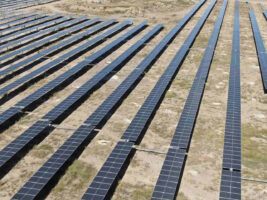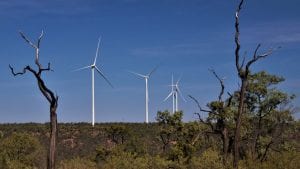Old ideas die hard, but some ideas die harder than others. Like Hans hanging out the top floor window of Nakatomi Plaza, ideas like Locational Marginal Pricing, or the belief in the need for ‘baseload’ generation, just refuse to let go.
Marginal Loss Factors (MLFs) is a similar desperado. Well past its use by date, it keeps coming back like a Gruber with a vengeance.
OK – no more Die Hard references (maybe?). The rest of this piece will be focused on exploring some near term reforms to improve the MLF framework.
In the longer term, we need to keep working on deeper issues like marginal vs average losses. However, in the shorter term we could focus on pragmatic reforms, like setting 10 year forward pathways for MLF values, setting upper and lower bounds for these pathways based on scenario analysis and integrating the MLF analysis with the ESOO and ISP.
Without getting lost in the arcana, MLFs are numbers that represent the volume of energy that is lost as heat, when a generator sends power down a line. This MLF number is applied to the generator’s wholesale revenues, reducing them to account for the energy volume lost.
The MLF number represents the marginal loss – that is, the losses from the final increment of power sent down the line. Impedance increases with line flows, so these marginal losses are larger than average losses – approximately double in most cases.
Because marginal losses tend to be larger than average losses, the current framework can result in over-recovery from generators. These over-recovered amounts are paid to customers as an offset to network charges.
MLF values can and do change each year. Sometimes these changes are large, causing double digit reductions in revenue. These changes will become harder to predict year on year and over the longer term, as coal exits and new renewables and transmission come online.
There are two views regarding whether the MLF framework remains fit for purpose.
NEM traditionalists hold that marginal pricing drives efficiency. They argue that scaling generator revenues by reference to marginal rather than average losses sends strong signals to make better locational decisions – ie, to invest where marginal losses are smallest. Consumer advocates also tend to like the current framework, given it allocates the cost of losses primarily to generators.
The CEC and many renewable developers argue the MLF framework deters clean energy investment in Australia. The marginal approach results in an over recovery of the cost of losses and heavily penalises renewables. High levels of uncertainty around the forward values of MLFs also increases financing costs, which ultimately flow through to higher energy prices.
Previous attempts have been made to fix the MLF framework. The main proposal was to use average instead of marginal losses. These reforms were rejected by the AEMC. The AEMC argued the economic principle of marginal pricing remained paramount and that the current approach sent strong locational signals, as well as some questionable analysis of consumer price impacts.
David Osmond has previously explained why these arguments no longer hold. Basically, the over recovery and uncertainty inherent in the current MLF frameworks increases investment costs, which significantly outweigh the purported benefits of a marginal approach to loss factor calculation.
The CEC continues to advocate for more fundamental change to the loss factor framework. This will ensure Australia can attract investment capital and deliver on our decarbonisation targets.
However, sometimes it’s best to focus on quicker wins, wherever and whenever opportunities arise. Our Connections Reform Initiative exemplifies this approach, helping to resolve some previously intractable problems.
We hope to apply a similar approach to MLFs. The most immediate and tractable problem is the difficulty of forecasting MLF values in the medium to longer term. This creates uncertainty and increases financing costs, in turn increasing costs for both generators and consumers.
Setting forward pathways of MLFs, over a 10 year plus time horison, would reduce uncertainty for investors. This should form the basis for immediate reform to the MLF framework, without losing sight of the long-term goal of more fundamental change.
There are opportunities to resolve this issue through existing processes. For example, AEMO is currently consulting on its Forward Looking Loss Factor methodology, which sets out how it calculates and applies MLFs. The CEC has worked closely with AEMO and our members to find a better way forward through this process.
Providing investors with improved certainty could be achieved by:
- Changing the way that AEMO goes about calculating the MLFs at each node. Currently the national electricity rules require AEMO to base MLFs on a single reference year of historic generation data. While AEMO adjusts this data to reflect future expectations, the use of a single historic year can result in material variations. It may be better to utilise multiple reference years, or calibrate these historic reference years against other forecasts.
MLF calculation could also be integrated with other AEMO processes such as the ESOO and ISP. These processes explore future development pathways and are understood by industry.
- These ESOO / ISP based forecasts could be used to determine a 10 year forward pathway of likely MLFs at each connection point. While these values would be expected to change each year, improved clarity regarding their likely direction will enhance investment decision making.
- AEMO could apply different scenarios to this forecast, to provide investors with an indication as to how MLFs will move under different system outcomes. For example, how will MLFs change if a coal generator retires earlier, or an interconnector energisation date is delayed. These scenarios could provide an upper and lower bound for the forward MLF pathways.
Ideally (or alternatively?) the detailed data sets used to calculate these losses would be made available to connecting parties, so they can undertake more accurate MLF forecasts.
- More fundamental changes could also be considered, such as setting ‘side constraints’ that limit the total change in MLFs in any given year.
The CEC has offered to work with AEMO to undertake a holistic review of the loss factor framework, up to and including rule changes, to make this framework fit for purpose.
This will not be a simple or uncontested process. But we are quietly confident we can break the deadlock and reach a better outcome.
Maybe then we can get on with our lives and spend a little less time on Linked-In debating this particularly ugly three letter acronym. All happy trails from there.
Christiaan Zuur is director markets, grid and investment at the Clean Energy Council.








